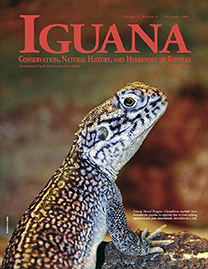The Knight Anole (Anolis equestris) in Florida
Abstract
In this paper, we discuss the likely modes of introduction of the Knight Anole (Anolis equestris) into and around Florida, provide data on its current geographic distribution, and summarize life history data in both its native and introduced Florida range. Our field data consist of collections made from 1992 through 2008 and locality data taken from the literature and systematic collections throughout the United States. Anolis equestris was first introduced in Miami-Dade County in 1952. The subsequent spread of this species in Florida has been both natural and assisted by human translocations to 10 additional counties, including Brevard, Broward, Collier, Highlands, Lee, Martin, Monroe, Palm Beach, Polk, and St. Lucie. Because this species is nonindigenous and known to consume a wide variety of items, including small vertebrates, it should be removed when encountered in the wild. A comprehensive study detailing its effects on the environment is needed.

